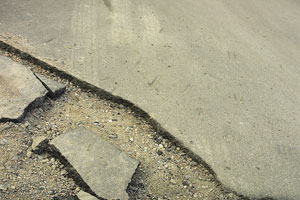LOS ANGELES
Southern California could be overdue for a powerful earthquake along the notorious San Andreas fault line, according to a new study.
New research to be published next week and carried out by scientists at the University of California, Irvine, suggests large quakes have rumbled along the fault roughly every 137 years over the last 700 years. Previously, scientists had thought large earthquakes occurred on the line every 200 years or so.
Scientists studied the Carrizo Plain section of the San Andreas fault, which has not seen a massive earthquake since 1857, when one struck at an estimated magnitude of 7.9.
The San Andreas fault runs between two tectonic plates and scientists have long believed it is capable of originating the so-called Big One that many in California fear and that officials have warned of for decades.
“It’s been long enough since 1857 that we should be concerned about another great earthquake that ruptures through this part of the fault,” said Ken Hudnut, a U.S. Geological Survey geophysicist who was not involved in the study.
One of the study’s principal investigators, Lisa Grant Ludwig, has been analyzing soil samples at the Carrizo Plain for about 20 years. Using radiocarbon dating on charcoal deposits and by looking at soil patterns, Ludwig and colleagues found there were four recent big earthquakes before the 1857 temblor, probably occurring around 1310, 1393, 1585 and 1640.
Scientists can’t be sure the pattern will hold, Ludwig said.
“But we know it increases the probability of an earthquake,” she told the Los Angeles Times. “There’s not any way I can look at the data and be comforted by it.”
Ludwig’s team has collected additional samples and preliminary analysis of these suggests the time between big quakes may be more like once every 100 years.
Information from: Los Angeles Times, http://www.latimes.com










